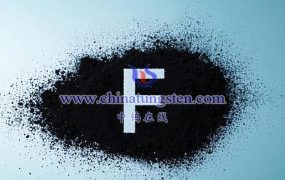Cesium Tungsten Oxide (Cs₀.₃₃WO₃) infrared absorbers can be synthesized using various methods, each with distinct processes, advantages, and limitations. Below are some of the primary preparation techniques:
- High-Temperature Solid-State Method
Process Overview:
- Weigh tungsten-containing compounds (e.g., tungsten oxide, ammonium paratungstate) and cesium-containing compounds (e.g., cesium carbonate, cesium chloride) according to the stoichiometric ratio.
- Grind and mix the compounds evenly.
- Pre-calcine the mixture in air at 400–800°C for 4–15 hours. Allow it to cool naturally to room temperature, then grind and mix again.
- Conduct high-temperature calcination of the pre-calcined mixture at 800–1200°C for 4–15 hours. After cooling naturally, grind the material to obtain cesium tungsten oxide powder.
Advantages:
- Simple preparation process.
- Suitable for industrial-scale production.
Disadvantages:
- High energy consumption during calcination.
- Possible emission of harmful gases during processing.
- Chemical Solution Method
Process Overview:
- Dissolve tungsten-containing compounds in dilute nitric acid or other suitable solvents, then add a complexing agent (e.g., oxalic acid, citric acid) to obtain Solution A.
- Dissolve cesium-containing compounds in a similar solvent with a complexing agent to obtain Solution B.
- Mix Solution A and Solution B under controlled conditions (e.g., temperature, stirring speed) to form a precursor solution.
- Age and dry the precursor solution.
- Calcine the dried precursor in air at appropriate temperatures and durations, then grind the material to obtain cesium tungsten oxide powder.
Advantages:
- Uniform distribution of raw materials ensures high-purity cesium tungsten oxide.
- Allows control over particle size and morphology by adjusting reaction conditions.
Disadvantages:
- Relatively complex preparation process.
- Use of solvents and complexing agents may increase costs and create waste disposal challenges.
- Solvothermal Method
Process Overview:
- Dissolve tungsten and cesium sources in a solvent (e.g., ethanol, ethylene glycol) with the addition of complexing agents and templates (e.g., cetyltrimethylammonium bromide).
- Conduct the reaction under specific temperature (e.g., 180–350°C) and pressure conditions with stirring for a designated time.
- Separate, wash, dry, and grind the reaction product to obtain cesium tungsten oxide powder.
Advantages:
- Produces nanoparticles with small sizes and uniform dispersion.
- Morphology and structure can be tailored by selecting appropriate templates.
Disadvantages:
- Requires specialized high-temperature, high-pressure equipment, leading to higher costs.
- The choice of solvent and template significantly affects the final product’s performance.
- Other Methods
In addition to the above, other methods such as sol-gel, ultrasound-assisted spray pyrolysis, and others are also employed for cesium tungsten oxide preparation. These methods provide alternative routes with specific benefits and limitations depending on the target application and cost considerations.
Conclusion
Cesium tungsten oxide infrared absorbers can be synthesized using diverse techniques, offering flexibility based on specific requirements. Practical considerations such as raw material availability, production cost, environmental impact, and desired product performance play a crucial role in selecting the appropriate method. These preparation techniques enable the customization of cesium tungsten oxide properties for various applications, ensuring broad utility and adaptability.

More details of tungsten oxide product, please visit website: tungsten-oxide.com
Please contact CHINATUNGSTEN for inquiry and order of tungsten oxide:
Email: sales@chinatungsten.com
Tel.: 86 592 5129595






